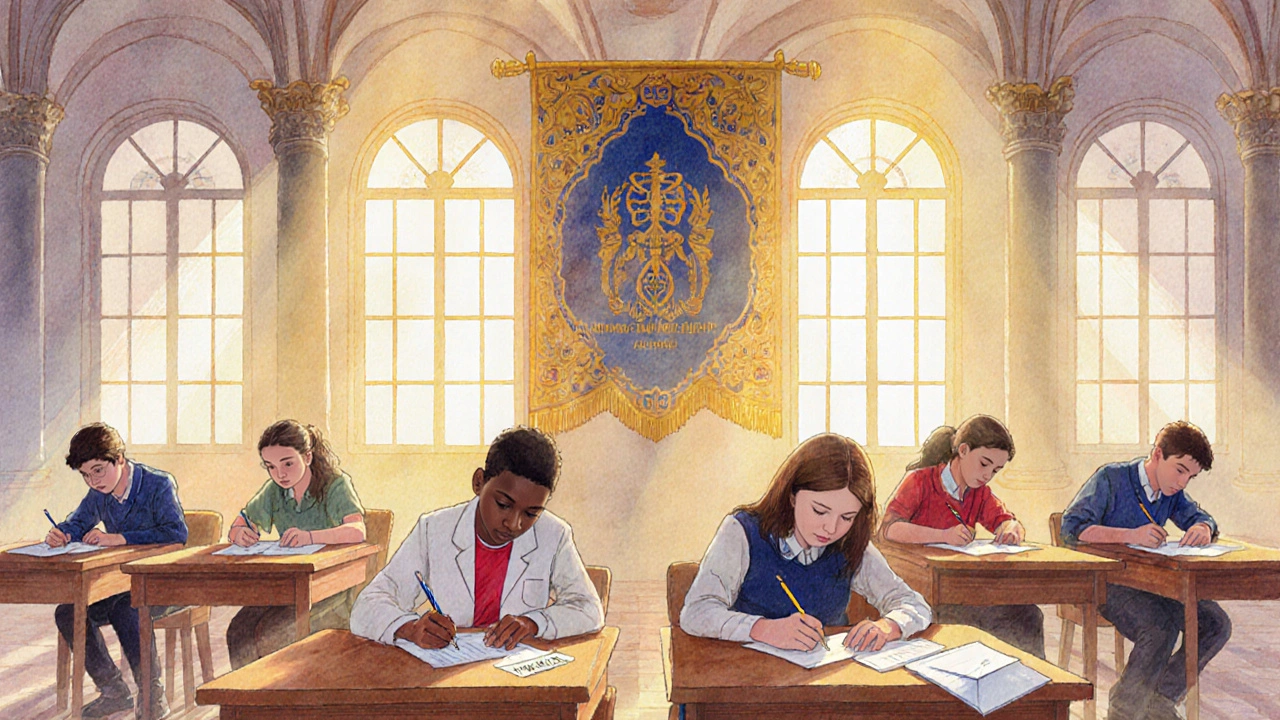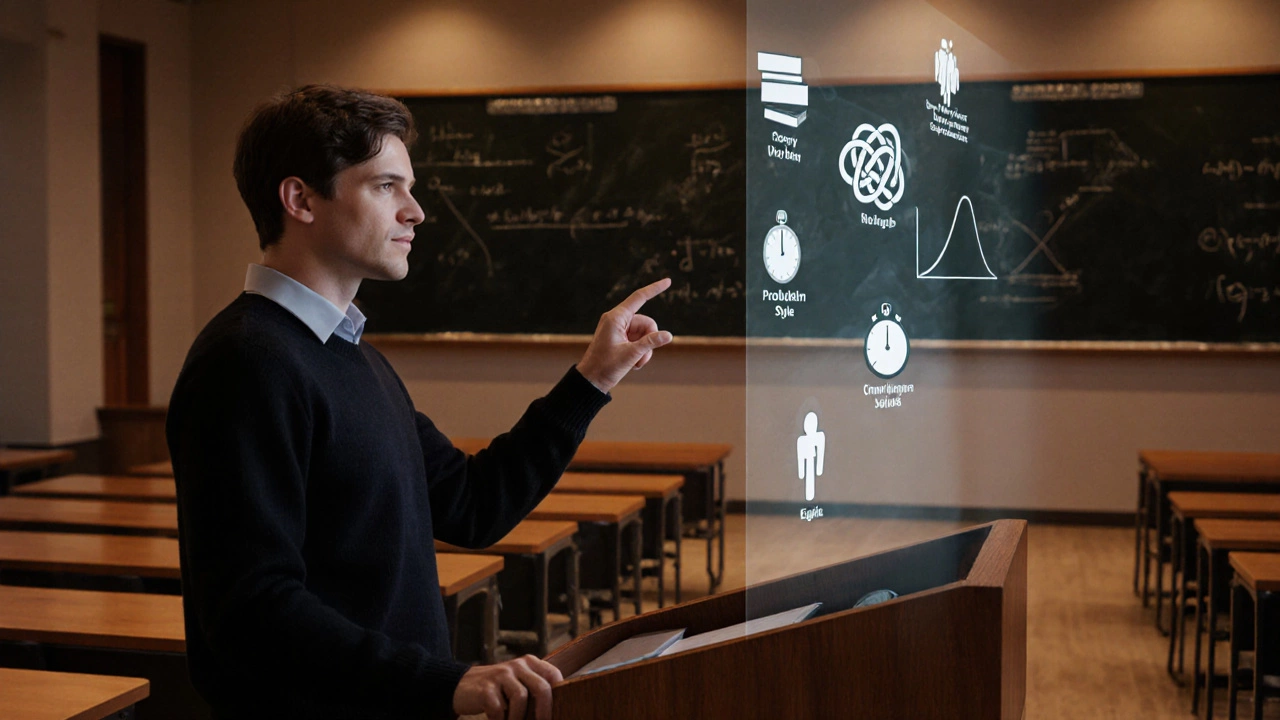Math Exam Difficulty Calculator
How Difficult Is Your Target Exam?
Rate each criterion's importance for your situation. We'll calculate which exam is toughest based on your preferences.
Rate Your Priority Factors
Your Toughest Exam Results
International Mathematical Olympiad
difficulty score
Why it's toughest for you:
Detailed Comparison
Ever wondered which math exam makes even seasoned prodigies break a sweat? That one showdown where the questions feel like puzzles from a different dimension? In this article we break down the contenders, compare their wow‑factors, and tell you exactly what makes an exam earn the bragging rights of being the hardest math exam on the planet.
How Do We Measure "Hardness" in a Math Exam?
Before we name a champion, we need a scoreboard. Difficulty isn’t just a gut feeling; it can be sliced into concrete criteria:
- Depth of concepts: Does the test ask for advanced university‑level theory or stick to high‑school basics?
- Problem style: Are questions straight‑forward calculations or multi‑step proofs that require creative insight?
- Time pressure: How many minutes per question and how many total questions?
- Eligibility & competition pool: A test open to millions of students will have a wider skill range than one limited to a handful of elite participants.
- Scoring distribution: If the median score hovers near zero, the exam is brutally tough.
With these lenses we can line up the world’s most feared math assessments.
Meet the Heavyweights
Here’s a quick roster of the exams that constantly appear in the "hardest" conversations:
- International Mathematical Olympiad (IMO) - The golden crown of high‑school math contests, hosted annually in a different country.
- Putnam Competition - The premier undergraduate math contest in North America.
- IIT JEE Advanced - India’s gateway to the elite Indian Institutes of Technology.
- Chinese Gaokao Mathematics - The math component of China’s high‑stakes university entrance exam.
- Russian Mathematical Olympiad - A national contest that feeds into the International Olympiad pipeline.
- USAMO - The United States of America Mathematical Olympiad, the final round of the American “Olympiad” track.
- AIME - The American Invitational Mathematics Examination, a bridge between the AMC series and USAMO.
- Kangaroo Math Competition - A worldwide multiple‑choice contest famous for its quirky, time‑crunch questions.
International Mathematical Olympiad - The Benchmark of Pure Problem‑Solving
Founded in 1959, the IMO brings together the top six high‑school math whizzes from over 100 nations. Each participant tackles six problems over two days, with each problem worth seven points. The questions demand proof‑style answers that blend number theory, geometry, combinatorics, and algebra.
Typical difficulty indicators:
- Only about 10% of contestants score above the halfway mark (21/42 points).
- Problems often require original lemmas that are not covered in standard curricula.
- Time allocation: 4.5 hours for six deep‑think challenges-less than an hour per problem.
Because the IMO filters through national Olympiads, every test‑taker is already among the best in their country, pushing the bar to an extreme level.
Putnam Competition - The Undergraduate Gauntlet
The William Lowell Putnam Mathematical Competition, held every December, is the Ivy League of math contests for college students. Six problems over a single five‑hour session make up the entire test. Scoring ranges from 0 to 120 points, with each problem worth 10 points.
Why it feels impossible:
- Only about 2% of participants earn a total score above 50.
- Problems blend advanced topics like abstract algebra, real analysis, and topology-areas most undergrads see only in graduate‑level courses.
- Answers demand rigorous proofs, not just computations.
Even the brightest undergraduates describe the Putnam as "a nightmarish marathon of pure reasoning."
IIT JEE Advanced - The Indian Engineering Gatekeeper
After clearing the massive JEE Main exam, the top 2‑3 lakh aspirants face JEE Advanced. The paper consists of two sections (Paper 1 and Paper 2), each with 30 multiple‑choice and integer‑type questions. Topics span calculus, coordinate geometry, vectors, and complex numbers, but the twist lies in the non‑standard question formats-matching, comprehension, and multi‑correct options.
Key hardness factors:
- Negative marking for wrong answers adds a strategic layer.
- Problems often require clever shortcuts; a straightforward integration can be a red herring.
- Success rate hovers around 0.5%-making it one of the toughest engineering entrance exams worldwide.
Chinese Gaokao Mathematics - The High‑Stakes National Exam
Gaokao, China's college entrance exam, is notorious for its sheer pressure. The mathematics portion alone lasts 150 minutes and contains 30 questions split between multiple‑choice and open‑ended problems. The syllabus includes high‑school algebra, geometry, trigonometry, and calculus.
What makes it brutal:
- Every point can decide a student’s future university.
- Problems are calibrated to differentiate among millions; even a small mistake can drop a score dramatically.
- Time pressure: less than five minutes per question on average.
While the content may not reach the abstraction level of the IMO, the stakes and volume of competitors raise its difficulty quotient.

Russian Mathematical Olympiad - The Eastern Europe's Secret Weapon
Russia runs a tiered system of Olympiads, culminating in a national final that feeds the international team. The final round features six proof‑based problems similar to the IMO, but with a distinctive emphasis on combinatorial geometry.
Difficulty highlights:
- Average scores are lower than the IMO, with only a few participants cracking 4 or more out of 6.
- Problems often require deep insight into classic Russian textbooks that are rarely translated.
Because the Russian system is heavily coach‑driven, the questions reflect a high level of training, making the exam exceptionally tough for outsiders.
Side‑by‑Side Comparison
| Exam | Target Audience | Number of Problems | Typical Score Distribution (Median) | Key Difficulty Drivers |
|---|---|---|---|---|
| International Mathematical Olympiad | High‑school prodigies (national teams) | 6 (proof‑based) | ~15‑20/42 points | Abstract proofs, multi‑topic integration, limited time |
| Putnam Competition | Undergraduate students | 6 (proof‑based) | ~10‑15/120 points | Graduate‑level concepts, rigorous proofs, high competition density |
| IIT JEE Advanced | Top Indian engineering aspirants | 60 (mixed formats) | ~30‑40/360 points | Tricky phrasing, negative marking, unconventional shortcuts |
| Chinese Gaokao Mathematics | All Chinese high‑school seniors | 30 (mix) | ~180‑200/300 points | Extreme time pressure, high stakes, breadth of syllabus |
| Russian Mathematical Olympiad | National high‑school talent | 6 (proof‑based) | ~12‑18/42 points | Deep combinatorial geometry, obscure textbook tricks |
How to Tackle the Hardest Math Exams
Facing any of these beasts requires more than raw talent. Below are battle‑tested strategies:
- Master Core Concepts First. Before you chase exotic tricks, ensure you can fluently use the fundamental theorems in each topic.
- Practice Proof Writing. Most top exams penalize vague arguments. Write full, structured proofs and have a peer review them.
- Time‑Box Your Practice. Replicate exam conditions: set a timer and stop at the exact allotted minutes.
- Analyze Past Papers. Identify recurring patterns-certain geometry configurations, number theory lemmas, or combinatorial setups appear year after year.
- Build a Mini‑Library of Lemmas. Keep a personal handbook of short results (e.g., Vieta’s formulas, Catalan numbers) that you can quickly reference during practice.
- Stay Healthy. Mental stamina drops after 2‑3 hours of intense focus. Get enough sleep, hydrate, and take short breaks during long study blocks.
Common Pitfalls and How to Avoid Them
Even seasoned competitors stumble. Watch out for these traps:
- Over‑reliance on memorization. A problem that looks familiar can hide a twist that nullifies a memorized formula.
- Skipping the “answer‑check” step. In proof‑based exams, a missing justification can cost 2‑3 points.
- Rushing the last few questions. Time pressure often leads to careless arithmetic errors-practice finishing early on mock tests.
- Ignoring the scoring rubric. Some contests award partial credit for correct ideas; learn how many points each part earns.
Quick Takeaways
- The International Mathematical Olympiad is widely regarded as the gold standard for pure problem‑solving difficulty.
- For undergraduate challenges, the Putnam Competition out‑scores every other college‑level test in sheer abstraction.
- National entrance exams like IIT JEE Advanced and Chinese Gaokao pack massive pressure into a single day, making them among the toughest in terms of stakes.
- Preparation hinges on deep concept mastery, rigorous proof practice, and simulated timed sessions.

Which exam has the lowest average score?
The Putnam Competition typically sees a median score under 10 out of 120, making it the exam with the lowest average performance among the listed contests.
Can high‑school students take the Putnam?
Yes, but only if they are enrolled in an undergraduate program. Some prodigies sit for it while still in high school, though they must meet the college eligibility rules.
How many problems does the IMO feature each year?
The International Mathematical Olympiad presents six proof‑based problems-three on Day 1 and three on Day 2.
Is there a shortcut to crack JEE Advanced questions?
No single shortcut works for every question. Success comes from mastering a broad toolkit of identities and learning to spot hidden patterns quickly.
What resources are best for IMO preparation?
Classic books like "Problem‑Solving Strategies" by Engel, the AoPS "Olympiad" volume series, and past IMO papers with detailed solutions form the core study material.
